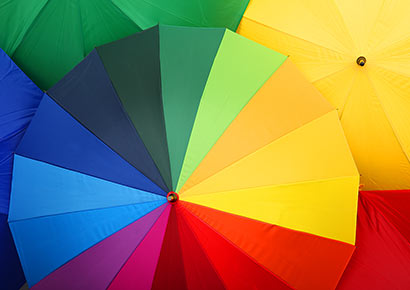Opinion | Navigating Gay Misogyny and Queer Solidarity
 In a recent episode of the new season of Will & Grace, Grace asks Will to “gaysplain” the term “Platinum-Star Gay” to her. A “Gold-Star Gay” is a gay man who has never had sex with a woman; a “Platinum-Star Gay,” like Jack, is a gay man who has also never had sex with a woman, but what truly elevates his status on this hierarchy is that he has never even come in contact with a vagina because he was born via C-section.
In a recent episode of the new season of Will & Grace, Grace asks Will to “gaysplain” the term “Platinum-Star Gay” to her. A “Gold-Star Gay” is a gay man who has never had sex with a woman; a “Platinum-Star Gay,” like Jack, is a gay man who has also never had sex with a woman, but what truly elevates his status on this hierarchy is that he has never even come in contact with a vagina because he was born via C-section.
There are other categories beyond the platinum and gold levels; this is but a taste of a well-known and intricate typology of male gay “purity”, which is measured through (non-)proximity to a woman’s body. And no, this is not fictional: the hierarchy is frequently used in male gay narratives.
This is offered as humour, of course, a bit of laughter to emphasise the funness and subversion of male gayness. Some may even say that there is a well-established history of using comedy, irony, humour, and ridicule, to disrupt heteronormativity. Gay male humour appears to be exceptionalised: yes, it’s offensive—but because you’re gay, it’s funny, it’s not hateful; it’s unserious.
However, the fact remains that gay men (like straight men) are the recipients of power bestowed by patriarchy. The “ha-ha” hatred of women’s bodies expressed above is, in essence, no less hateful and misogynistic than the gender violence perpetuated by cishet men; in fact, one could say that the comedy here, as a silencing mechanism, renders the gay misogyny even more insidious.
Given this example, it should come as no surprise that men—regardless of their sexuality—were excluded from the recent national shutdown protest against gender violence. Some of the marketing of the event stipulated that only women and gender non-conforming individuals were invited. Add to this the events at the recent London Pride march, where some radical feminists (holding signs saying “gay not queer”) stopped the march and insisted that the presence of trans* was an invasion of womanhood.
With this in mind, the perceived alliances between, on the one hand, gay men and women & gender non-conforming communities, and, on the other hand, cishet women and trans* women, are exposed as more tenuous than imagined. After recently celebrating Women’s Month, this raises questions about the complexities of contemporary gender activism. Considering these tensions, how do we build coalitions as an effective mode of resistance to patriarchy?
Our suggestion is to look to Queer. If conventional gender activism is stuck in identity politics (the reason for these tensions), then we need to explore alternatives. Historically, “Queer” was used to describe something as abnormal or strange. It was further used as a derogatory term to describe people whose gender, gender performance and/or sexualities do not conform to normative and/or dominant socio-political expectations. In recent years, the word has been appropriated and reclaimed as a means to strip it of its historical violence.
Queer has been deployed as an umbrella identity that encompasses the entire LGBTQIAP acronym as a means to disrupt hierarchical divisions and binaries. It has also been deployed politically as a verb (“to queer”) and as a noun, to encapsulate non-normativity and/or Otherness. Queer groupings claim the word as a means to disrupt and/or challenge equality-seeking politics—queers criticize conventional gay activism for wanting to conform to hetero/homonormativity; “queer” essentially rejects what it calls assimilatory politics. “Queer” is thus commonly deployed as a political tool in an attempt to challenge/disrupt dominant and oppositional power-relations.
So how can queer and queering help us out of an identity and/or assimilatory activism that serves the status quo, and, by extension, heteropatriarchy? The answer is complicated and opaque. We would argue that one does not need to be queer in order to do queer. In fact, performing queer may be a way of liberating us from identity markers, narratives, politics, and activism that are designed to divide and exclude.
Theoretically, queer likes to do; queer does not like to be.“Queering” (as verb) is a radical act, and will disrupt the discourses around trans* phobia, misogynies and heteropatriarchy without demanding a retreat into ready and exclusive identities. Queer further rejects ready definitions, categorisation, and hierarchies. This could be useful in practice, and by extension, in the realm of gender activism.
One lesson is to embrace fluidity, and to shun the supposed imperative for these constructed categorisations and definitions. Queering Women’s Month, for example, would unite us in our shared opposition to heteropatriarchy. It would also serve to redefine and reclaim the solidarity lacking in spaces that at the moment remain contested, and divided. This is not to say that we must ignore the violences that women experience on a daily basis—such silencing is violent in itself. Instead, acknowledging identity-based tensions (through the deployment of Queer) allows us to respond without reverting to the oppositional discourses that often inform and impose those very oppressions. Until we do this, the binaries of heteropatriachy will succeed in dividing us.
Indeed, the future is queer.
J. Lotter and P. Fourie currently teach in the Department of Political Science at Stellenbosch University. This article was first published by Daily Maverick.
Leave a Reply